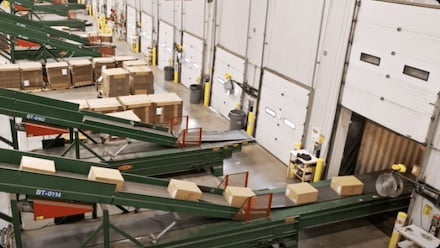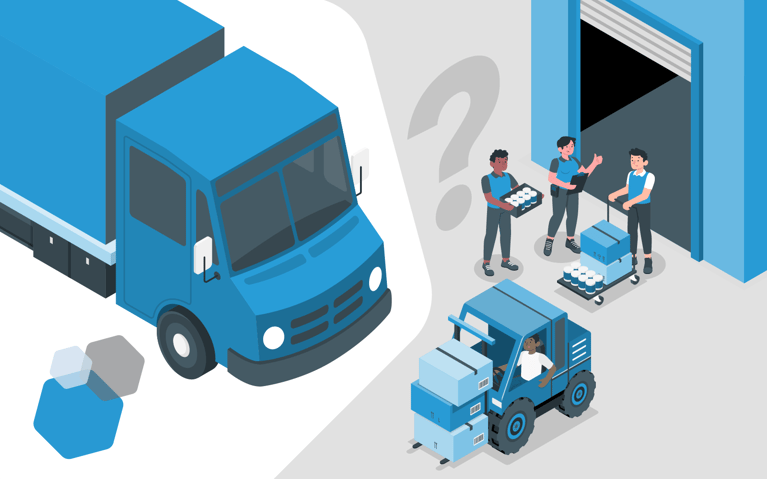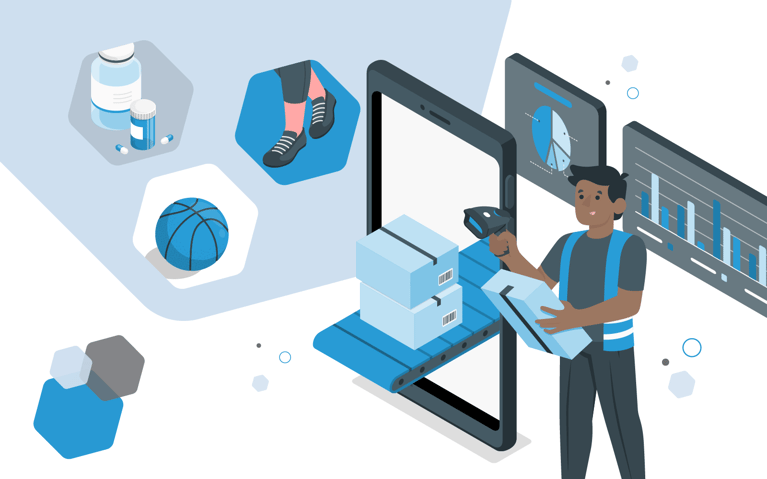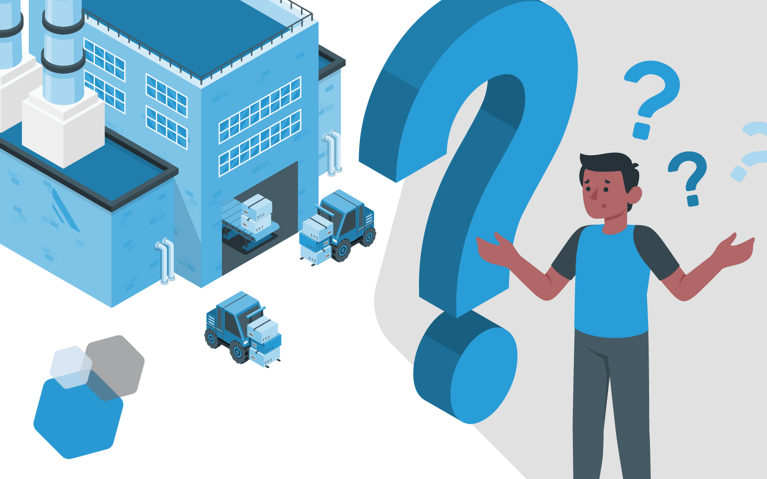The warehousing market in 2025 is an odd one, to say the least; economic uncertainty has led many suppliers to alter their provided services, with more warehouses charging fees for account management, returns and long-term storage than this time last year.
Dedicated warehousing solutions: Service trends, 2019-2025
*Source data
These trends reinforce the importance of choosing the right fulfillment model to support efficiency, scalability and the customer experience. Whether you need a shared or a dedicated warehouse solution. Shared warehousing provides flexibility and a pay-for-what-you-use approach. A dedicated warehousing solution provides facility space that is exclusively configured for a single brand's inventory and fulfillment workflows, offering greater control and long-term stability.
With that in mind, this article covers everything you need to know about these solutions; their benefits, costs, alternatives and what you need to consider as you get started. Cart.com provides both options depending on what best supports your brand's current and future needs.
What is a dedicated warehouse solution?
A dedicated warehousing solution involves reserving an entire fulfillment facility or section of one exclusively for your brand's use. This space is managed by a third-party logistics provider (3PL) like Cart.com and is designed to support your unique workflows, tech integrations, storage requirements and SLAs.
The benefits of dedicated warehouse solutions
For businesses with the resources and volume to invest, a dedicated warehousing solution provides several benefits, including:
- Customized infrastructure: Dedicated warehousing solutions allow businesses to design the warehouse layout, storage systems and workflow processes according to their specific requirements and preferences.
- Security and control: Companies have tighter control over security measures and inventory management protocols with exclusive access to a warehouse facility.
- Scalability: Dedicated warehousing offers scalability options that can accommodate fluctuations in inventory levels and business growth.
- Productivity: By dedicating resources solely to one company's operations, dedicated warehousing promotes streamlined workflows and optimized processes.
How much does a dedicated warehousing solution cost?
Although there is no exact answer to that question — it will hinge on a number of factors, which we describe below— we can provide a few averages using available data taken from market research. Warehousing has seen a slight rise in operational costs over the first half of 2025 due to a constricted market and international stressors on the industry.
Using the averages provided in the table to the right, the typical monthly expenses of an in-house dedicated warehouse solution is ~$33,671 after approximately ~$80-$90,000 has been paid for setup and automations. In effect, this approach consumes more time, energy and money than most business owners are prepared to invest.
By contrast, working with a third-party logistics (3PL) platform to provide a dedicated warehousing solution for you typically costs a fraction of the price, averaging between ~$4k-~$80k depending on typical volume:
Dedicated warehousing solutions pricing averages by volume |
||||
| Expense | Order volume | |||
|
~500/month |
~5000/month |
~20,000/month |
||
| Onboarding & setup (One time) |
~$500 |
~$1,250 |
~$3,000 |
|
| Technology & Integration (One time) |
~$600 |
~$1,300 |
~$3,500 |
|
| Storage fees (Per pallet) |
~$2,000 |
~$10,000 |
~$30,000 |
|
| Pick & pack fees (B2C) |
~$1,600 |
~$12,500 |
~$45,000 |
|
| Returns processing |
~$203 |
~$1,000 |
~$3,000 |
|
| Account management fees |
~$55 |
~$112.50 |
~$225 |
|
| Receiving fees (Per pallet) |
~$300 |
~$2,500 |
~$7,500 |
|
| Estimated total (monthly) |
~$4158 |
$26,112.50 |
$85,725 |
|
| Estimated sum total |
~$5,258 |
~$28,662.50 |
~$92,225 |
|
This means that in certain cases — particularly large enterprises which have a steady demand — an in-house dedicated warehouse solution is more profitable once the higher initial investments have been taken care of. For everyone else, working with a 3PL-provided dedicated warehousing solution is cheaper both upfront and over time.
Are there cheaper alternatives to a dedicated warehousing solution?
Companies looking to reduce the impact of the initial investment that comes with a dedicated warehousing solution by going in with other businesses to collectively rent space/equipment/resources. This is what’s known as shared warehousing.
What is shared warehousing?
Shared warehousing is a model in which multiple brands store their inventory in the same fulfillment facility. In this flexible and cost-effective model, brands benefit from access to professional fulfillment infrastructure, experienced teams and proven operational workflows, without the overhead of owning or managing their own facility. While support resources are shared across multiple clients, processes are standardized and optimized for efficiency, ensuring consistent service levels.
Shared vs dedicated warehouse solutions
Shared warehousing can be attractive for smaller companies, but it, too, comes with several important considerations, such as:
Shared warehousing vs dedicated warehousing solutions |
||||
| Category | Dedicated warehousing (3PL) | Shared warehousing (3PL) | ||
| Description | Leasing or owning a facility solely for storing and distributing a single company's inventory and products | The shared space, resources and services within a single warehouse facility | ||
| Pros | Fully customizable processes | Variable based on client’s usage | ||
| Minimized cross-brand handling reduces the chances of inventory or shipping errors | Shared warehouses are standardized for efficiency and while each operates independently, the shared infrastructure can allow best practices to be learned across the facility which benefits all clients in that space |
|||
| Superior scalability to meet demand. However, a 3PL is equally more scalable because brands can often flex up or down without having to commit to sq. footage. | Access to shared resources/infrastructure | |||
| Cons | Higher operational costs | Less control over warehousing operations | ||
| Greater liability on the owner | Shared facilities may raise security concerns | |||
| Requires careful geographic placement | Competition for space/equipment/labor | |||
| Best for | Businesses with the resources, inventory and demand to justify the investment involved in their own facility. | Mid-market brands seeking flexible, scalable fulfillment without the commitment of dedicated space | ||
Is one model better?
No, not necessarily. Both models have different strengths and serve different needs. Your decision should depend on the complexity of your fulfillment operations, the volume you’re moving and the kind of control you need over your inventory and workflows.
A dedicated warehousing solution could be best if:
- You need full control over layout, workflows and security
- Your products require special handling or compliance
- You manage large volumes of inventory and high daily order counts
- You require custom integrations, packaging or fulfillment rules
A shared warehousing solution could be best if:
- You want to keep costs low while scaling operations
- Your products don’t require unique handling or configurations
- You value faster onboarding and geographic flexibility
- You experience seasonal or inconsistent volume
How should I select a dedicated warehousing solution?
Choosing the right warehousing model for your business takes careful consideration of different factors and ensuring that it aligns with operational requirements, budget and growth objectives.
- Start by assessing your current/projected inventory volumes and seasonal fluctuations to determine the appropriate level of storage capacity needed.
- Evaluate your product characteristics, such as size, fragility and shelf-life to decide whether specialized storage solutions or temperature-controlled facilities are necessary.
- Additionally, analyze your distribution network and customer base to optimize proximity and minimize shipping costs – you’ll also want to consider geographic reach and transportation infrastructure.
- Look at what helps you meet long-term growth plans and your budget. The solutions should optimize the efficiency of your supply chain operations while also helping you enhance the customer experience.
Warehousing with a 3PL
Deciding between shared and dedicated warehousing is about identifying the right fit for your brand. It will involve identifying the right fit for your current and future needs. If you’re still on the fence, we can evaluate your needs and help you choose the best options available to you.
When you work with Cart.com, you’ll benefit from either shared and dedicated warehousing solutions that can optimize inventory control, streamline operations and reduce overhead costs. To experience these benefits firsthand and enhance your supply chain efficiency, contact us today.
Subscribe to our emails for the latest industry insights!
By entering your email, you agree to receive marketing emails from Cart.com






